
Uvajuq
The Origin of Death
Elsie Anaginak Klengenberg, David F. Pelly, Kim Crockatt, David F. Pelly, Kim Crockatt
- 84 pages
- English
- ePUB (mobile friendly)
- Available on iOS & Android
Uvajuq
The Origin of Death
Elsie Anaginak Klengenberg, David F. Pelly, Kim Crockatt, David F. Pelly, Kim Crockatt
About This Book
The story of Uvajuq (oo-va-yook) is rooted in a time when people and animals lived in such harmony and unity that they could speak to each other. For Inuit, as for people whose traditions include the story of the Garden of Eden, this idyllic existence came to an abrupt end a long time ago. The story told here, in words and pictures, speaks of that ancient event and of the transition to an existence where a different kind of sharing prevails.
This old Inuit legend has recently taken on an entirely new dimension in Cambridge Bay, with the uncovering of a unique array of artifacts during an archaeological survey of the hill known as Uvajuq. The mysterious find offers a compelling confluence of myth and reality.
The legend of Uvajuq, as told here, was collected from a group of Inuit elders in the Nunavut community of Cambridge Bay, 300 kilometres north of the Arctic Circle. On the surface, it is the story of how three prominent hills near the community were formed. Underlying that is a tale of much deeper significance.
Frequently asked questions
Information
A Legend of the People
inuit huirungnaitillugit, inukpak nuliariik irnillak,
nunaqaqhimajut Kiillin’ngup tunun’ngani.
when people lived forever, there was a family of giants
who lived on the north side of Kiilliniq.
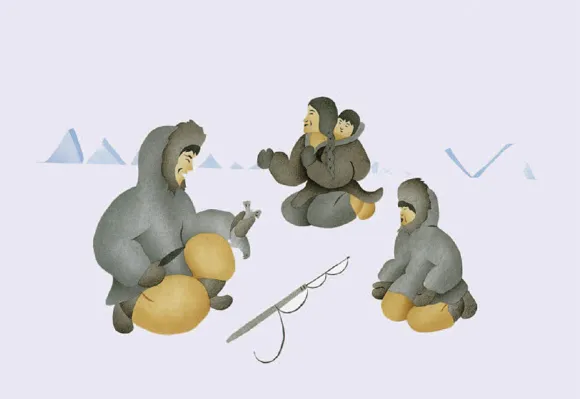
angijut inuit, niqitualgit angijunik imarmiutanik:
arvinik, ugjunik, aivirniglu.
these giants, accustomed to eating large sea mammals:
bowhead whales, bearded seals and walrus.
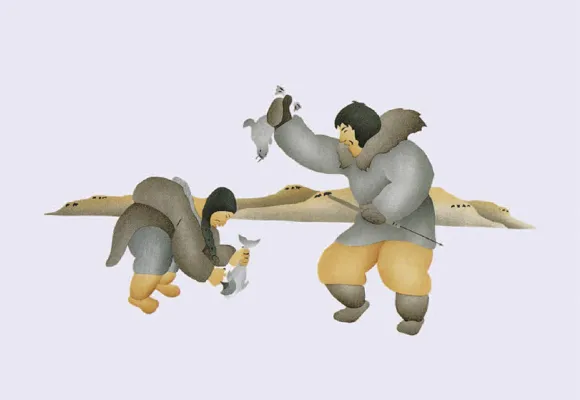
pihugumaliqqut hivuqqamut, nunap akiagut,
hivuliqtiqaqhutik Uvajurmik.
they decided to walk south, across the island,
led by a man named Uvajuq.
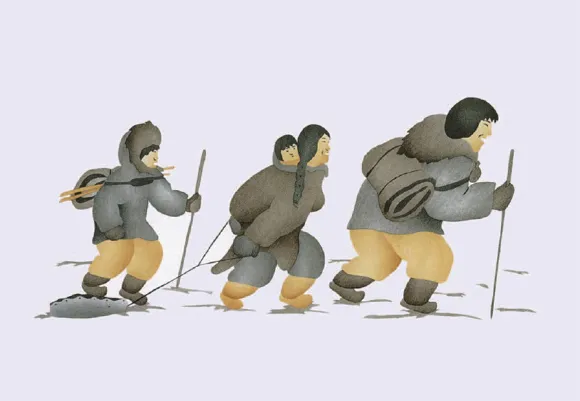
imakkuurniq ajunngitaan.
Nalukaphukhugit tattit angijuugaluit.
so crossing the water that lay in their path was easy.
They could simply wade through even the largest lakes.
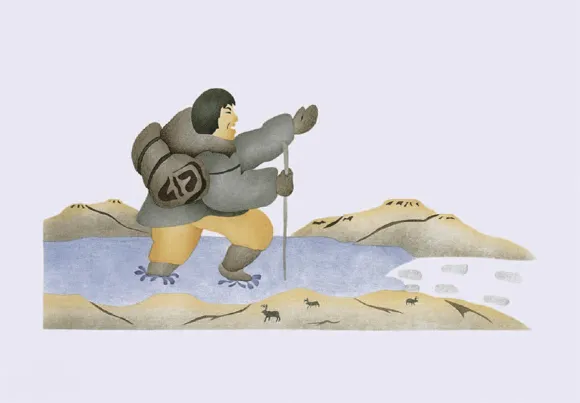
kaaliqpallialiqqut,
niqinnarijamingnik nalvaalairamik.
getting hungrier and hungrier as they went,
for they could find no food that suited them.

kihimi, angijuugamik, tuktut mikigijait—avin’ngatut
mikitigijut—nirijaakhamingnik ihumagijuitait.
as giants, the caribou appeared so small—like lemmings
to us today—that it never occurred to the giants
to eat the tiny caribou.

Amaaqtuq, arnalluaq,
hakuiqtuq hivumuuriaminik.
place to place without food,
Amaaqtuq, the mother of the family,
became too weak to continue.


irninilu, pihukhimmaaqtuk.
and the son, went on a little farther.
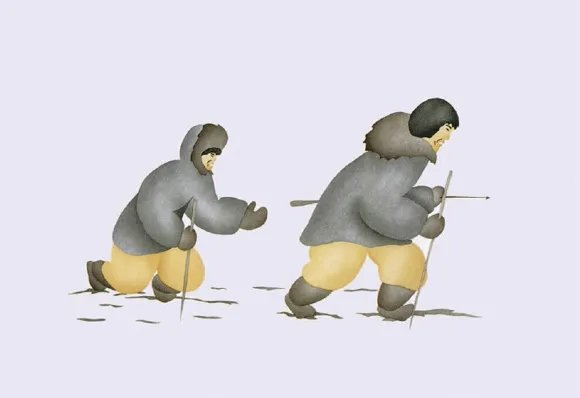
angut pihiqqaiqhuni pihukhimmaaqtillugu.
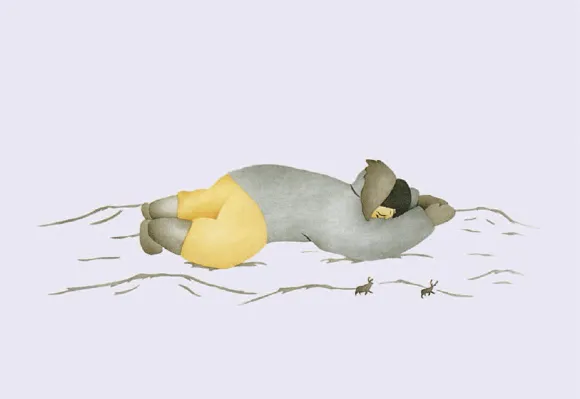
nunamunngaqhuni, niaqua hivuqqamun hanmipluni.
on the ground, head pointed to the south.

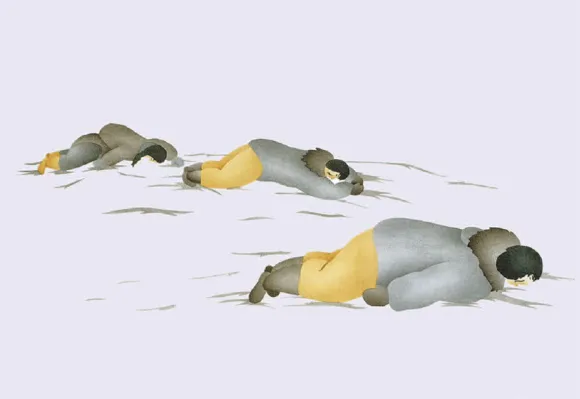
timait hauvut, nuna nauvalliapluni,
qaangillu ujaranikpalliavut, kingiktutuanguvut
naunaittut ungahiktumit takukhaujutuan tahapkua,
nuna manikkami. Qiniqhiattiaruvit, takuhunngujatit
tulimaangit naunaittut.
their bodies were covered by soil and rocks,
and they remain evident today as the only
hills for miles around in the otherwise flat land.
If you look carefully, yo...